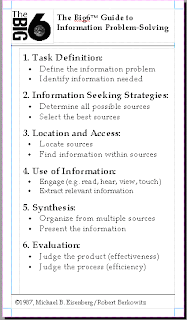Images provide a myriad of teaching opportunities, they can inspire, spark interest, initiate debate, develop understanding, provide understanding, engage learner, enhance visual communication skills and so much more.
In an Early Childhood context having images or pictorial representations allows the opportunity learners to engage in the topic as their emergence into language continues to grow. A learning structure such as ‘see, think, and wonder’ allows for children to express their ideas about the picture allowing the Learning manager as well as stakeholders to develop an idea of the child’s though pattern.
When exploring Tom March's page which also take a look into thinking routines I was delighted to discover a range of image sites which could be used in an early childhood setting. Below are links to pages displayed on the page as well as my personal ideas as to how they could be implement as well as any concerns I had.
- Tag Galaxy – This page is simple to use, just click on the link and type any initials or word which you desire. It then places a range of different pictures on a sphere; the sphere can then be moved in all different directions to display the picture. My personal favourite was ‘Autumn’ which displayed different images of autumn from around the world. This website would be great in a Early childhood situation as how the pictures are displayed are very appeasing and can be used when talking about common topics such as seasons, countries, elements etc.
*Concern: The only concern about this site is some of the potentially harmful images which could be displayed therefore Learning Managers will need to monitor students when using this tool.
- Pictures of the Week – picture taken from Time Magazine could be used to develop as sense of wonder as well as look at current events.
*Concern: a Time Magazine often deals with controversial issues some of the images could be inappropriate for young child, therefore learning managers will need to view the images beforehand.
Flikr : Another tool which I have investigated and developed skills for is Flikr. After creating my own account I uploaded my photo and began to explore the possibilities that this tool provides. One aspect which I found very interesting on Flikr was ‘Picnik mode’ which allowed me to edit the photo by rotating, cropping, resizing also by changing exposure, colours, and red-eye. Another tool in ‘Picnic mode’ in the create tab which allowed me to apply features which are not commonly available on other photo editors such as adding effects such as frames, using ‘heat map’ mode with distorts the colours of the picture, add stickers to picture and much, much more. This tool also allowed me to pixelate the image which I can see multiple uses to be able to display photo’s as a teaching tool or to record a particular play situations for analyses while protecting the identity of the child.
Concern: I believe that students in an early childhood context might have difficulties using this tool, however Learning Managers could use Flikr to incorporate photo’s into a Blog to use as a teaching tool or act as a digital portfolio.
Below are a few samples of my work on Flickr.
Reference:Choice – Effort – Quality – Attitude – Labor of Love, Learning to look. Accessed from:http://tommarch.com/ceqall/learning-to-look/
Reference: Visible Thinking, See Think Wonder. Accessed from: http://www.pz.harvard.edu/vt/visibleThinking_html_files/03_ThinkingRoutines/03c_Core_routines/SeeThinkWonder/SeeThinkWonder_Routine.html







